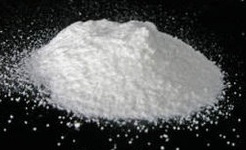 Classification: Tropane alkaloid stimulant
Classification: Tropane alkaloid stimulant
Commercial Names: Cocaine hydrochloride
Common Names/Nicknames: Coke, C, blow, candy, flake, snow, toot, crack, jack, jimmy, rock, nose candy, whitecoat, Charlie
Active Compound: Cocaine / benzoylmethylecgonine
Found in: Prescription cocaine hydrochloride, powder cocaine, crack cocaine (freebase form), speedball (mixed with heroin), A-bombs (mixed with marijuana), coca leaves
Mode of Consumption: Injection (cocaine hydrochloride), inhalation (smoking, freebase form), insufflation (powder cocaine)
DEA Scheduling/Legal Status (in US): Schedule II, legal with prescription with restriction (prescription cocaine hydrochloride), illegal in all states (powder and freebase forms).
Effects:
Euphoria, increased energy, increased attention, decreased fatigue, hallucinations, pleasurable response to movement
Risks:
Acute: Increased heart rate, hypertension, hyperthermia, accidental injury, seizures, cardiac arrest, stroke, sudden death, fatal overdose.
Chronic: Addiction, tolerance, withdrawal, weight loss, depression, psychosis, paranoid schizophrenia, heart damage, renal failure, increased risk of autoimmune disease
Insufflation: nasal septum damage. Inhalation (smoking): shortness of breath, tooth decay, blood disorders, lung damage
Dangerous Drug Combinations:
Potentially fatal combination with decongestants, antidepressants that are monoamine oxidase (MAO) inhibitors, nitrites, and other medications that affect heart rhythm. Potentially dangerous combination with other stimulants, depressants/sedatives, and medications with risk of seizure.
And remember, if somebody may need help, play it safe and call for medical assistance.
“Students may bring an intoxicated or drug-impaired friend to University Health Services or to a hospital, or seek assistance from College residential life staff or HUPD, and by doing this, neither they nor the friend will face disciplinary action from the College for having used or provided alcohol or drugs.”
The Amnesty Policy
Harvard College Student Handbook
Sources:
Buzzed: The Straight Facts About the Most Used and Abused Drugs from Alcohol to Ecstasy (Third Edition), by Cynthia Kuhn, Scott Swartzwelder, and Wilkie Wilson. Published 2008 by W. W. Norton & Company.
National Institute on Drug Abuse (NIDA), part of the National Institute of Health (NIH) of the U.S. Department of Health and Human Services.
http://www.nida.nih.gov/DrugPages/
U.S. Drug Enforcement Agency (DEA), part of the U.S. Department of Justice.
Erowid Organization

